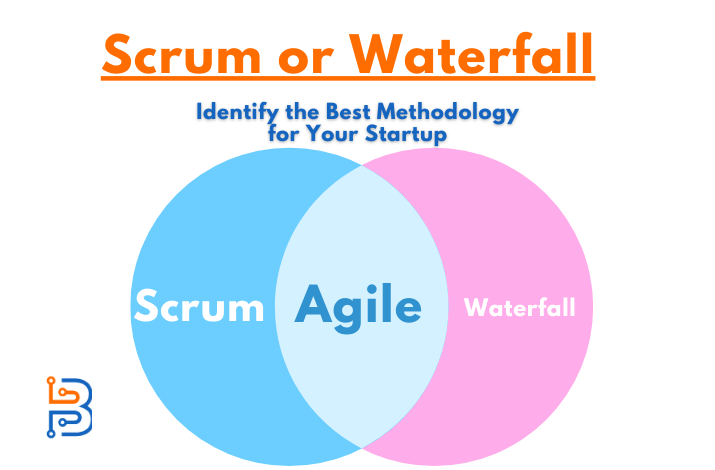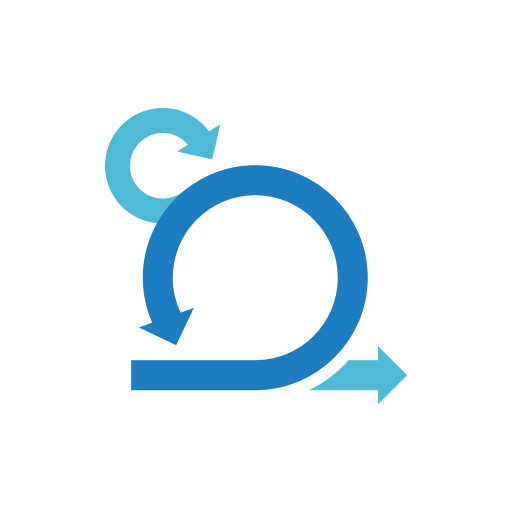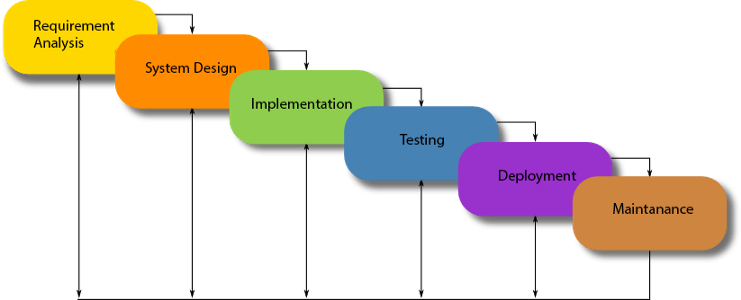Scrum or Waterfall – Identify the Best Agile Methodology for Your Startup

The choice between scrum and waterfall methodologies is a critical decision that every startup must make when launching a new project. Both scrum and waterfall approaches offer particular advantages and disadvantages. Moreover, selecting the correct agile methodology can get you greatly influenced by the success and efficiency of your startup’s development process.
In this article, we will tell you about the critical characteristics of scrum and waterfall methodologies and provide insights into how to determine the best methodology fit for your startup’s unique requirements.
What are Scrum and Waterfall Methodologies?
Scrum is an agile methodology that emphasizes flexibility, collaboration, and iterative development. It is centralized on the principles of transparency, inspection and adaptation. In scrum, projects are divided into time-boxed parts called sprints, usually lasting 2-4 weeks.

Waterfall, on the other hand, is a traditional sequential methodology. It follows a linear approach where each development phase (requirements, design, implementation, testing, and deployment) is completed before moving on to the next phase.
Identify the Best Methodology for Your Startup
It is not an option for startups to identify an effective methodology for their process, but it is essential. Here, you will get to know about the right methodology for picking up for your startups:
Project Complexity
The complexity of your startup’s project is able to influence your choice of methodology. Waterfall may be suitable if your project’s requirements are well-defined and unlikely to change greatly. However, if your startup is working on a project with evolving requirements and a need for rapid adaptation, scrum’s iterative nature can better accommodate these changes. This means you must ensure your project’s requirements, whether they are changeable or constant.
Flexibility
Startups frequently perform in dynamic environments where requirements can change due to market shifts or customer feedback. Scrum’s flexibility allows your startup teams to adjust their focus and priorities after each sprint. This flexibility makes it a favourable choice for startups that need to redirect fast. At this time, the waterfall methodology will not be able to provide such flexibility, making it unsuitable for startups that will redirect their priorities.
Speed to Market
There are some startups in the market who are willing to launch a minimum viable product (MVP) as fast as possible. Here comes a method called scrum, and scrum’s incremental approach is beneficial for startups like them. It allows for regular releases of functional product increments that enable early market entry and feedback collection. The waterfall method will be a failure or less beneficial because it follows a linear product approach where every development phase goes individually after one is completed.

Risk Management
The waterfall method’s comprehensive planning and documentation may aid you in risk management. This is because it provides a clear roadmap and reduces the possibility of any risk. However, scrum’s iterative nature allows your startup teams to identify and address risks earlier in the development process. Here is the difference between scrum and waterfall methodology. Now, it is up to you what you will pick, the first one who can reduce the risks associated with management and the second who may solve them earlier.
Team Collaboration
The scrum methodology places a strong focus on collaboration because it believes that regular meetings improve communication. In addition, it has the ability to make alignment among team members to improve their working efficiency. If your startup values cross-functional collaboration and transparency, scrum may be more suitable. The waterfall methodology is unable to create such an environment, although it needs efficient workers who can work effectively without any collaboration. Scrum will help you to make your workers more efficient than ever by doing some practical collaborations.
Customer Engagement
Scrum’s iterative cycles encourage systematic interactions and adjustments based on customer input if your startup prioritizes involving customers throughout the development process and incorporating their feedback. The waterfall methodology does not include systematic interactions to engage customers at large advantageous platforms to enhance the company’s conversion rate. This is up to you what you will pick and which methodology will align with your startup program simultaneously.
Combine Usage of Scrum and Waterfall
Startups can not use scrum and waterfall methodologies simultaneously because they are different methodologies that are opposite of each other. Moreover, some startups start doing projects with a waterfall methodology, and when it comes to products, they hire a scrum expert to manage their project in a scrum manner. A skilled scrum master aims to promote scrum principles throughout the organization and encourage a shift from traditional Waterfall practices.
Conclusion
There are no one-size-fits-all solutions when it comes to determining between scrum and Waterfall for your startup’s projects. Each methodology has its powers and disadvantages, and the decision should be based on your startup’s requirements and organizational culture. You need to assess the nature of your project, your team’s familiarity with agile practices, the speed at which you must deliver outcomes, and your ability to adjust to the changing requirements. It’s also worth noting that mixed approaches, combining elements of both methodologies, have become popular as they seek to balance the structured nature of Waterfall with the flexibility of scrum.



